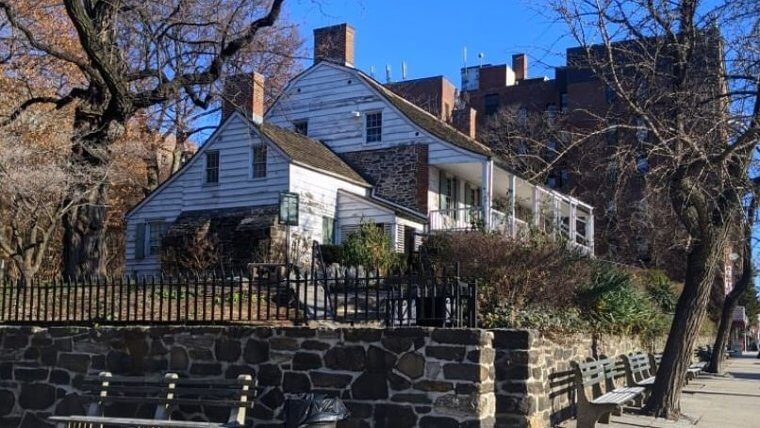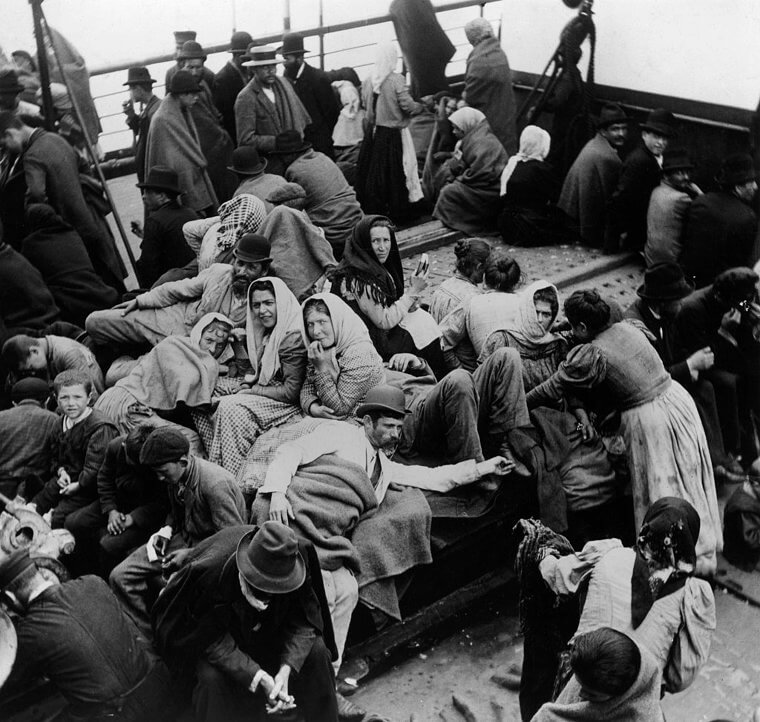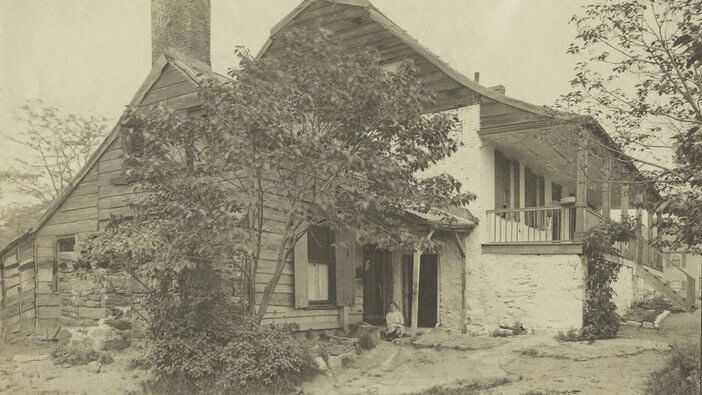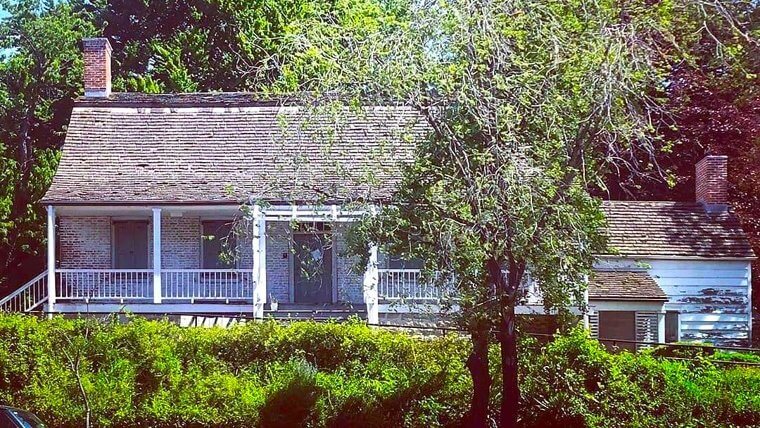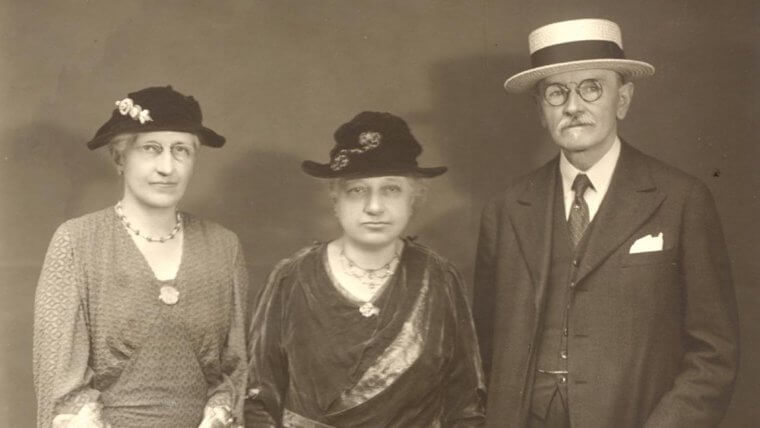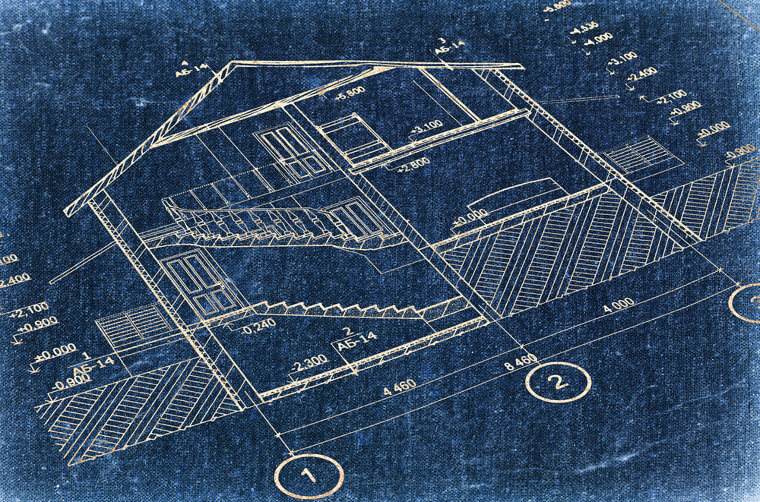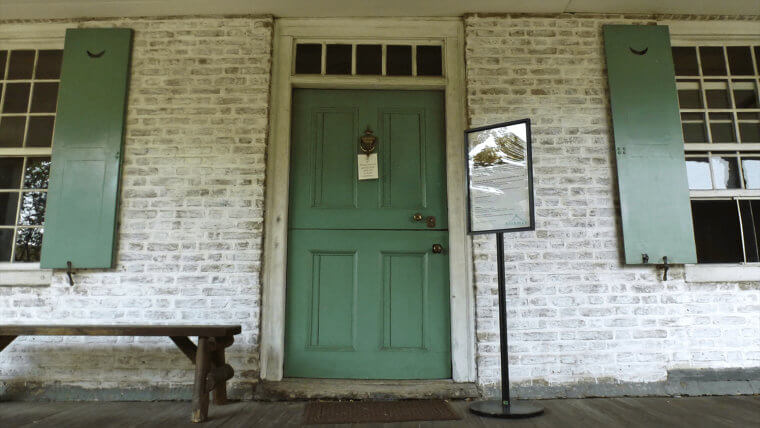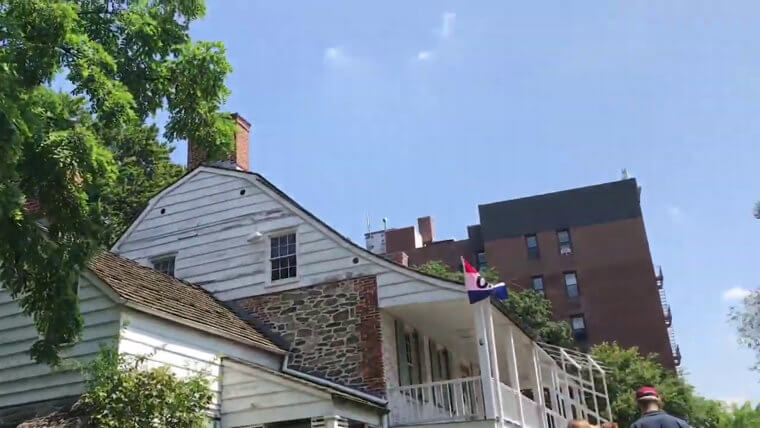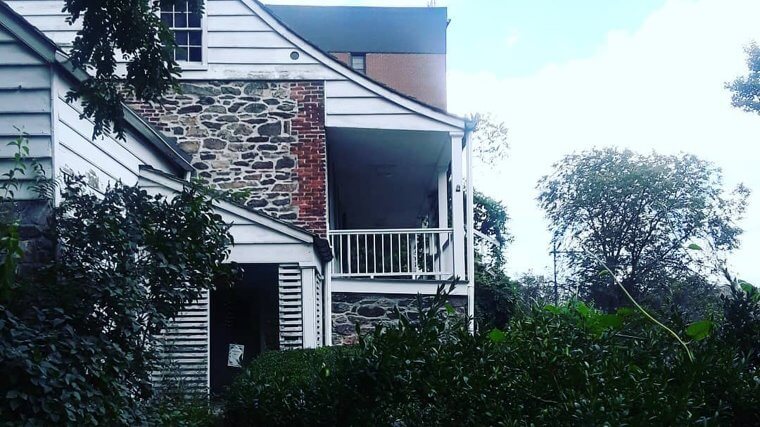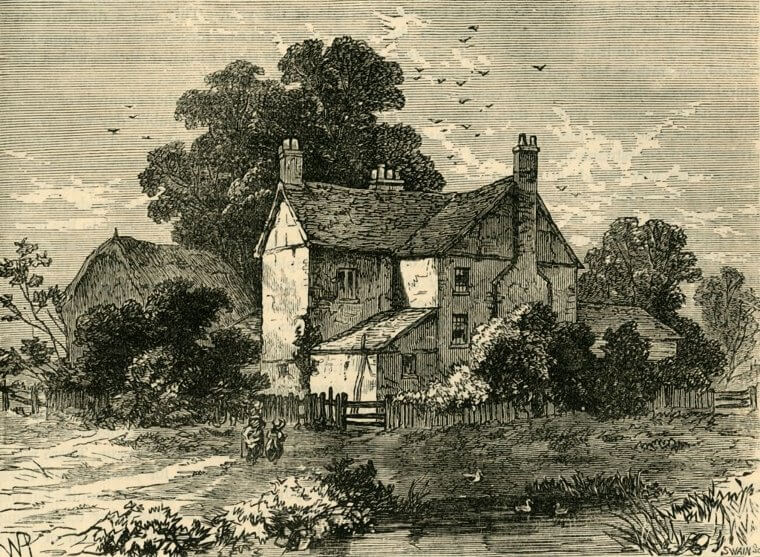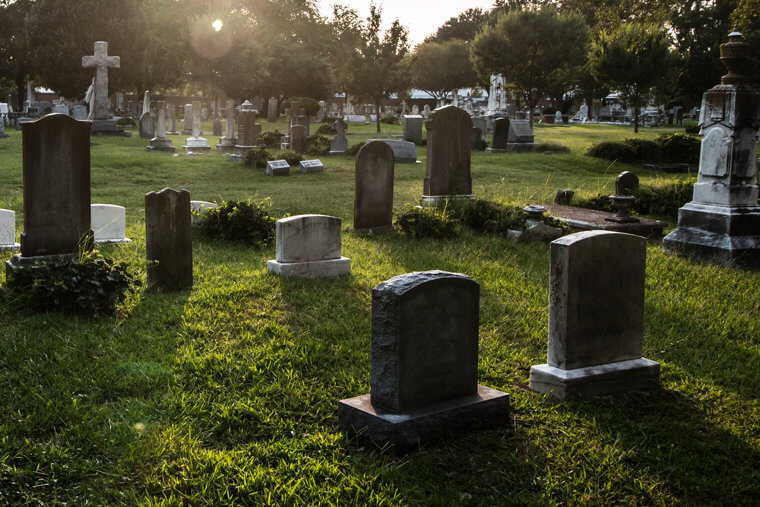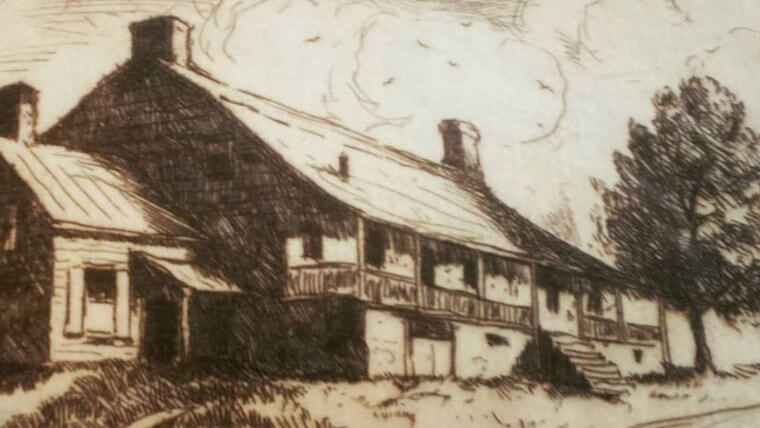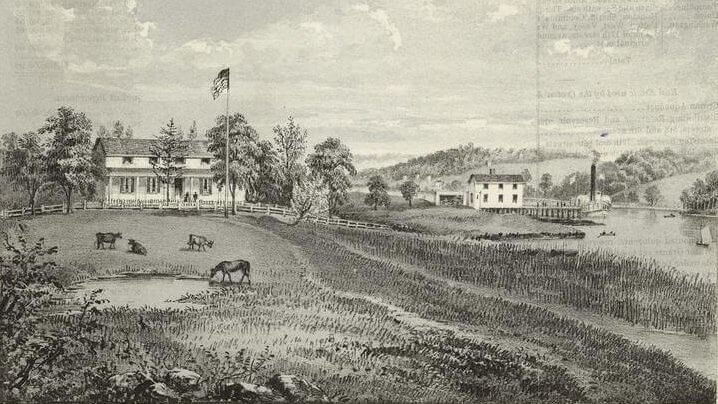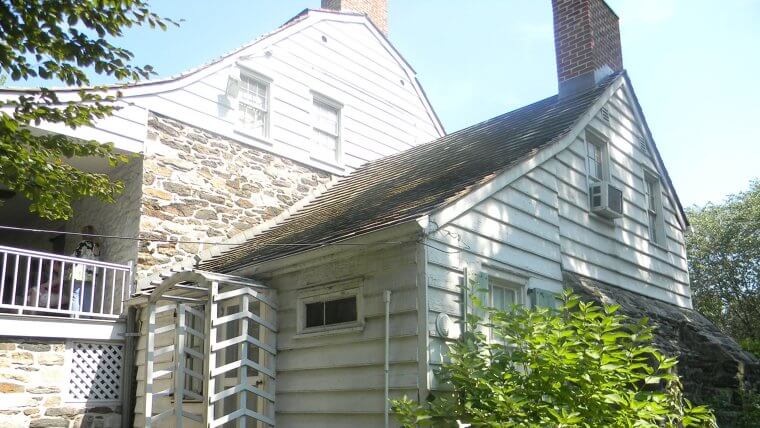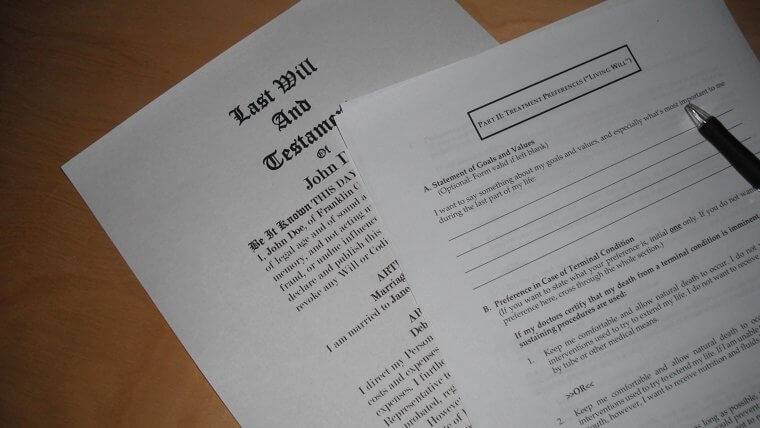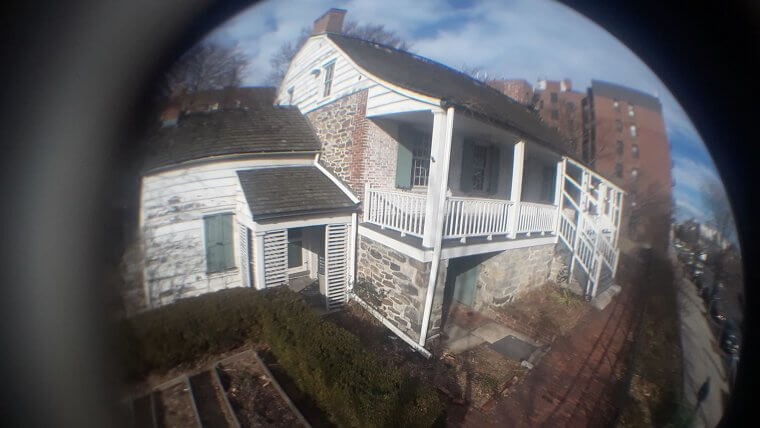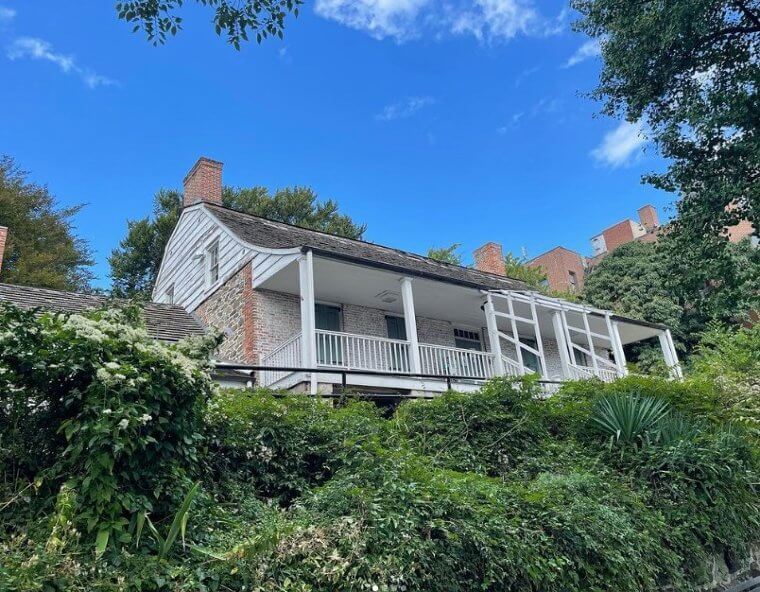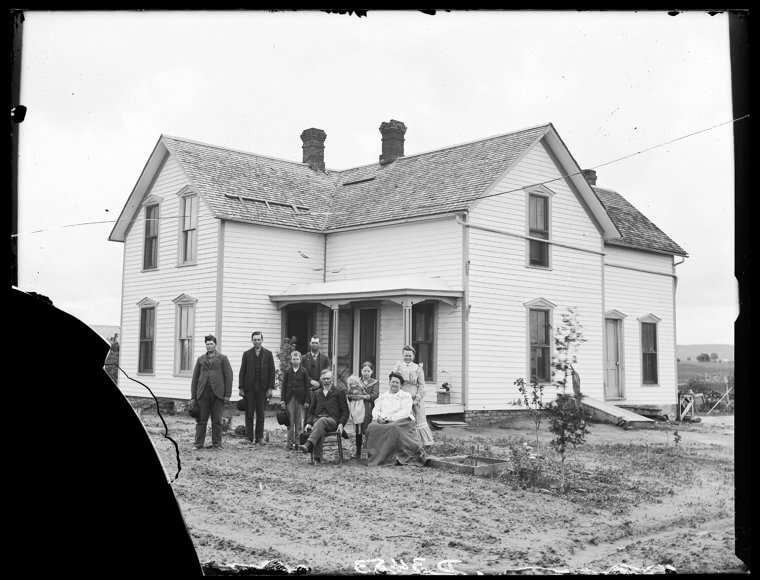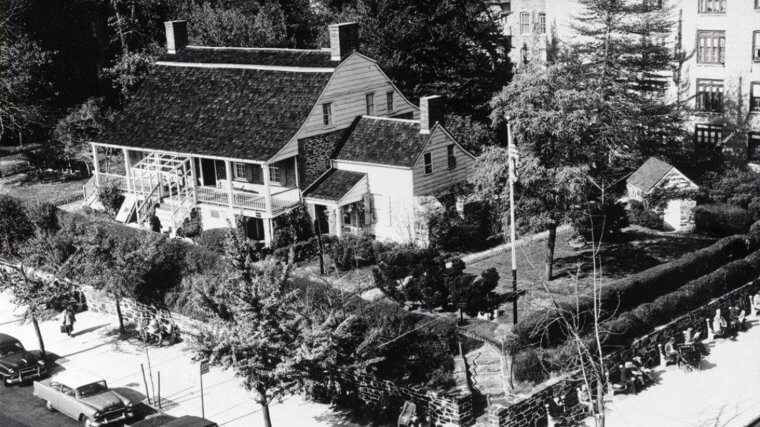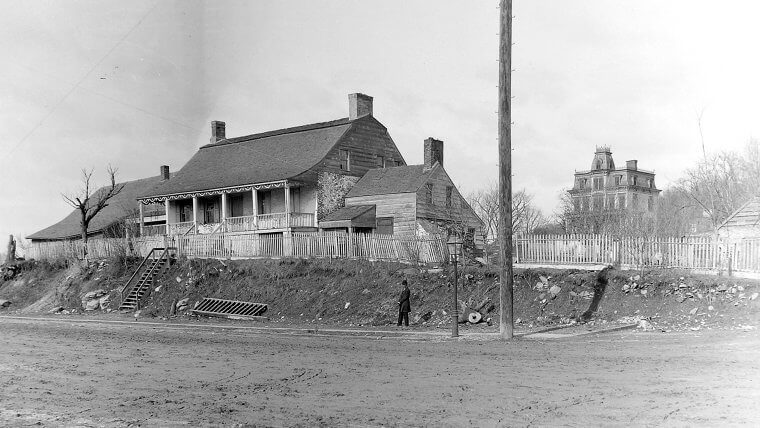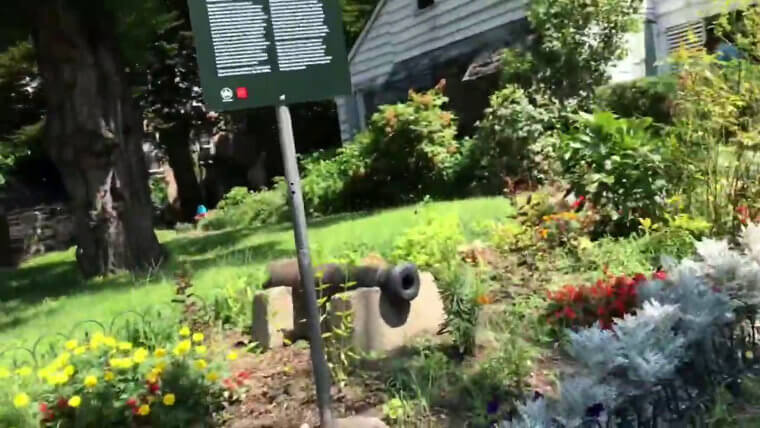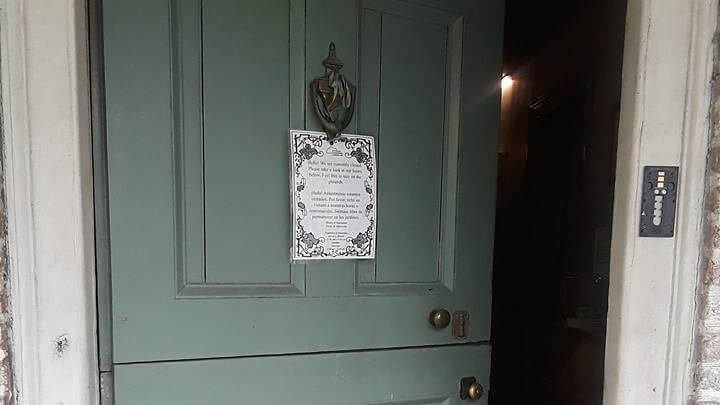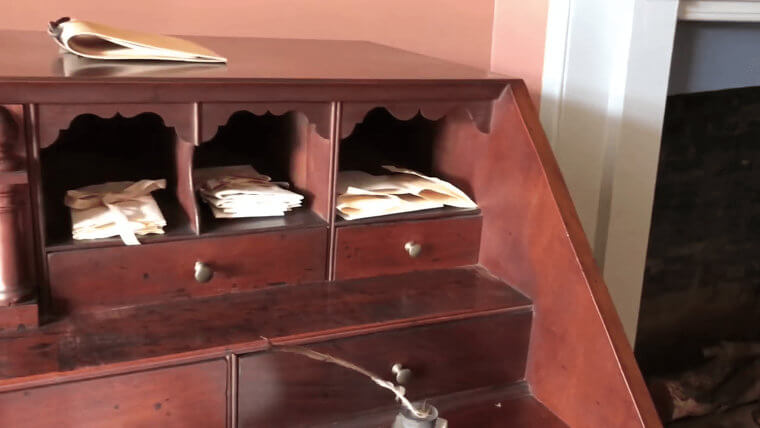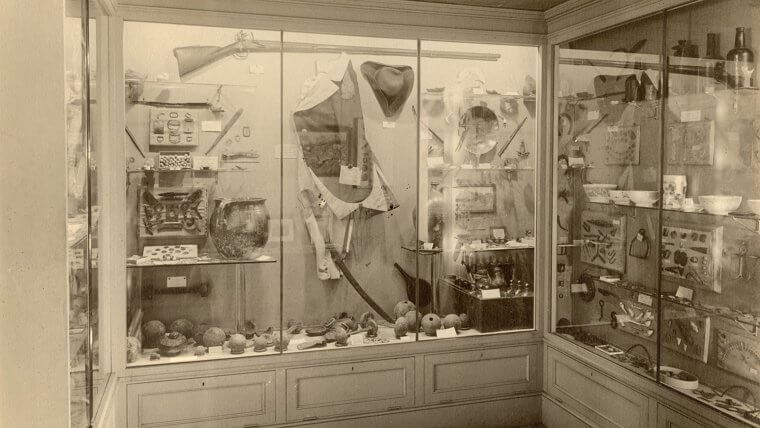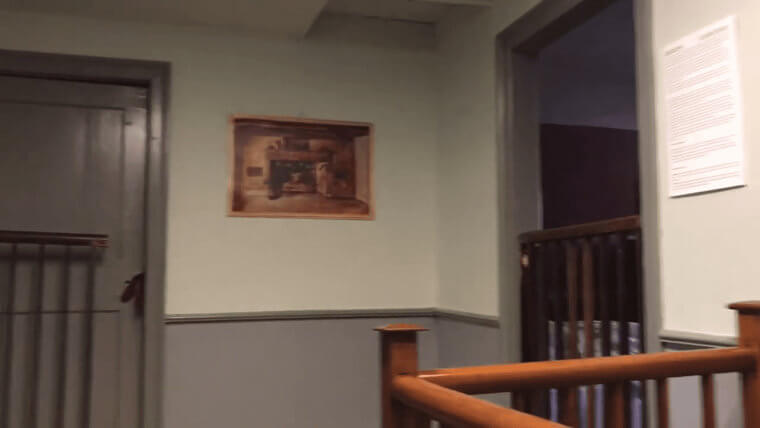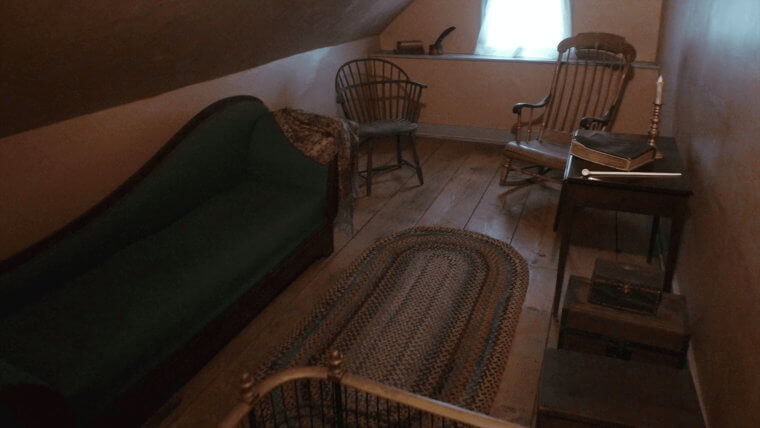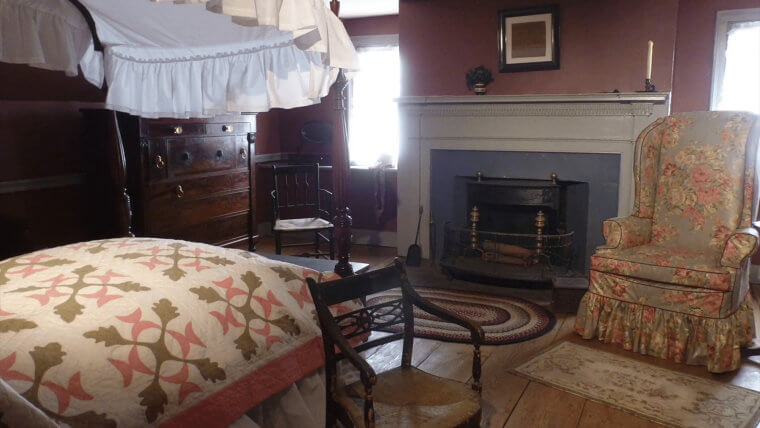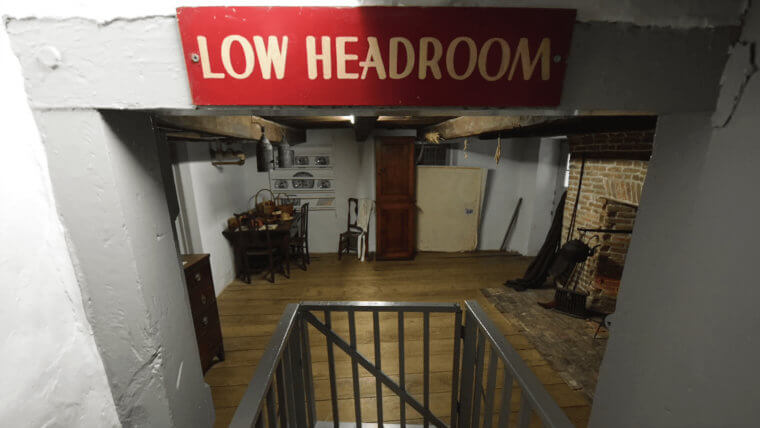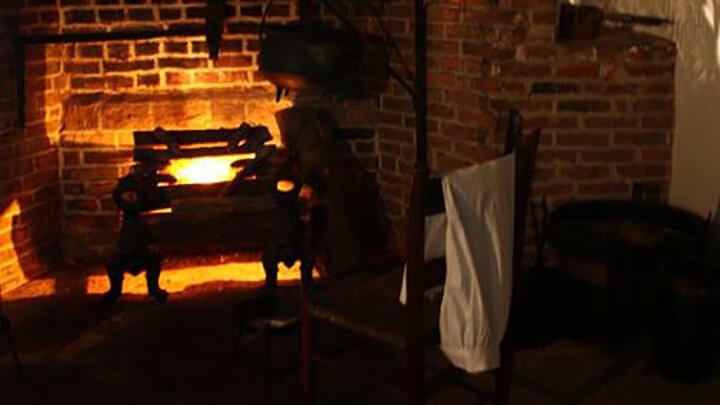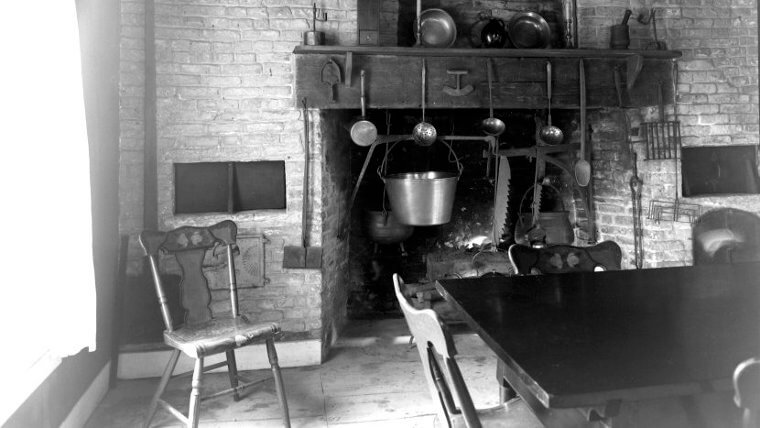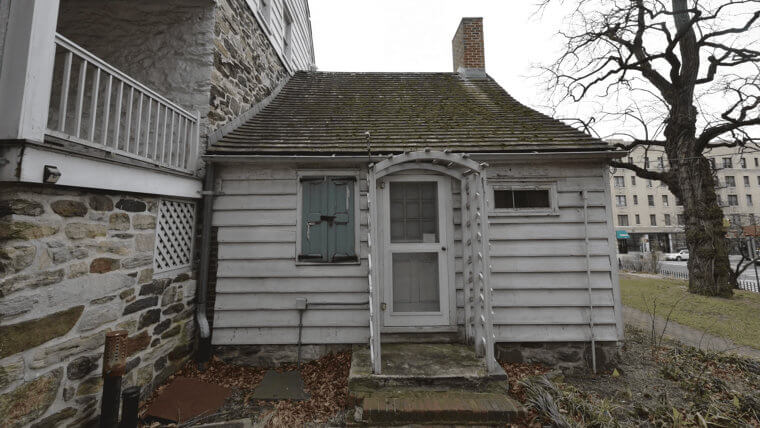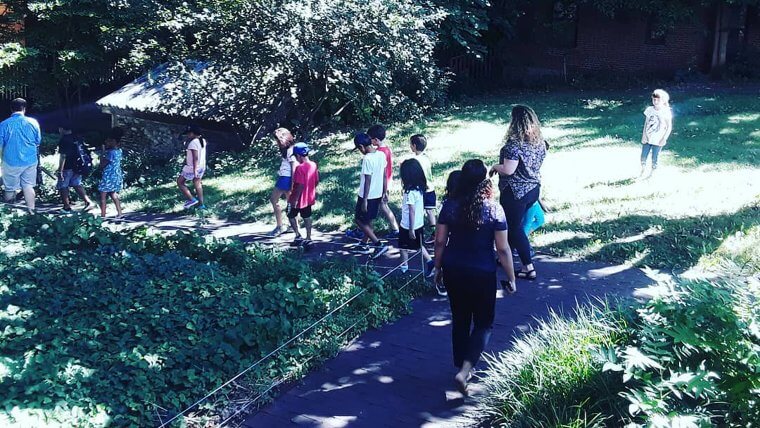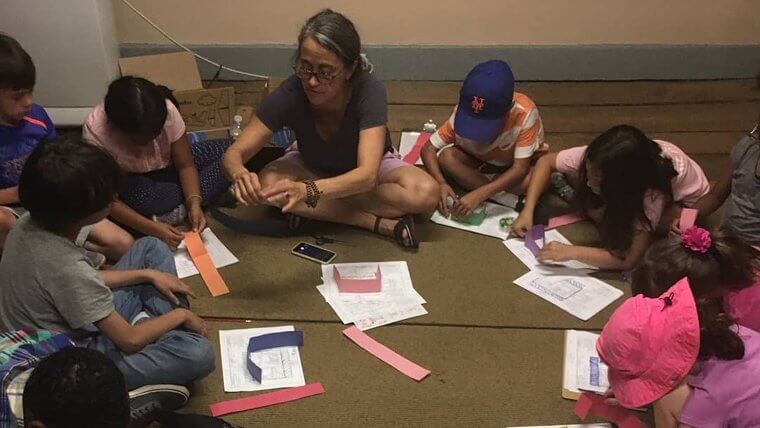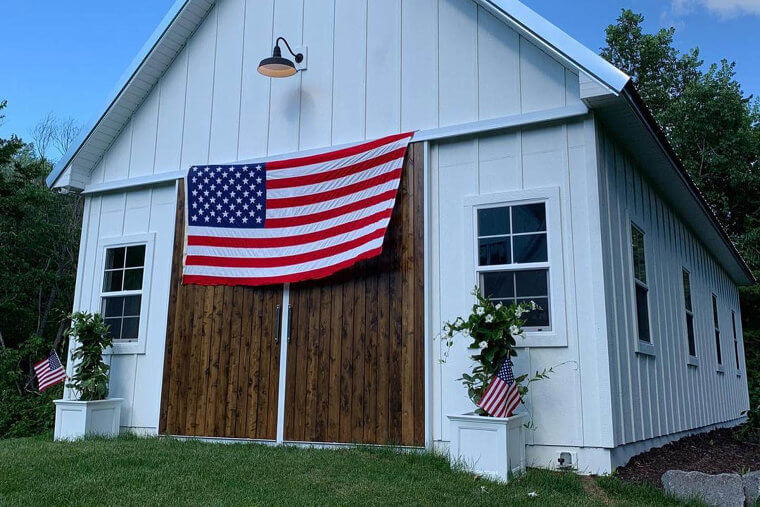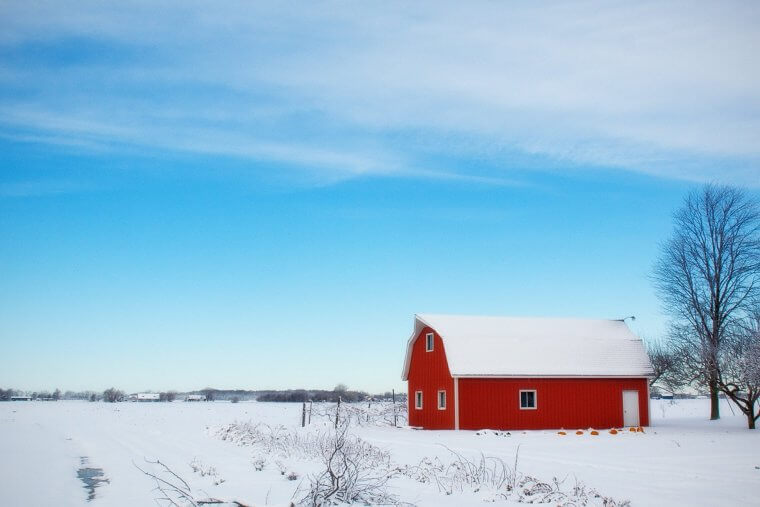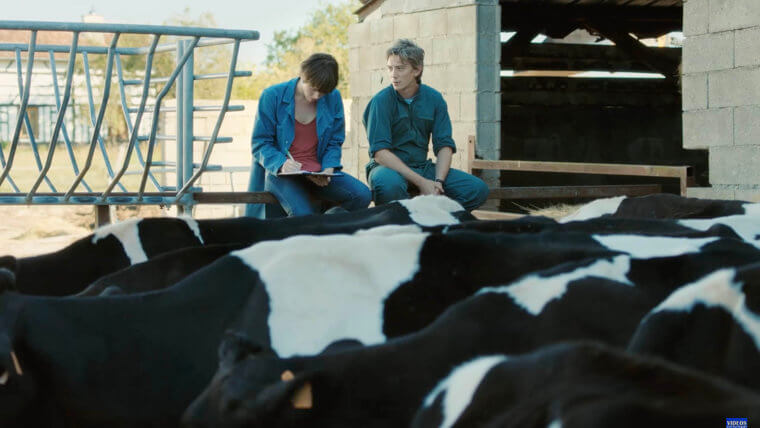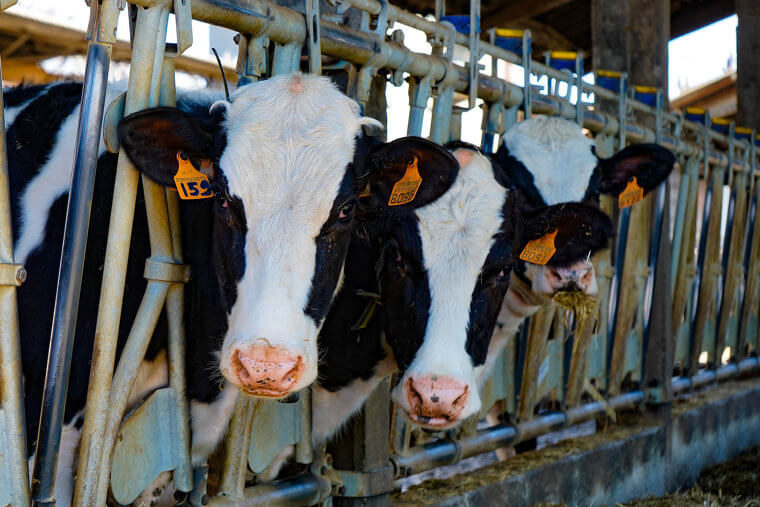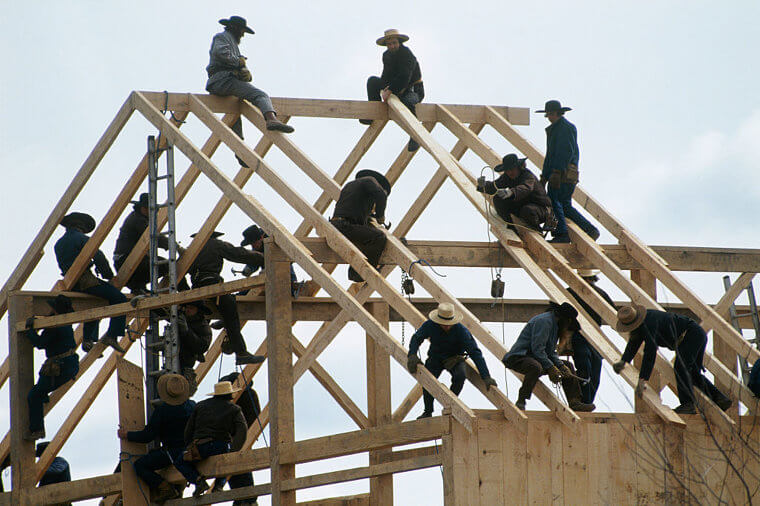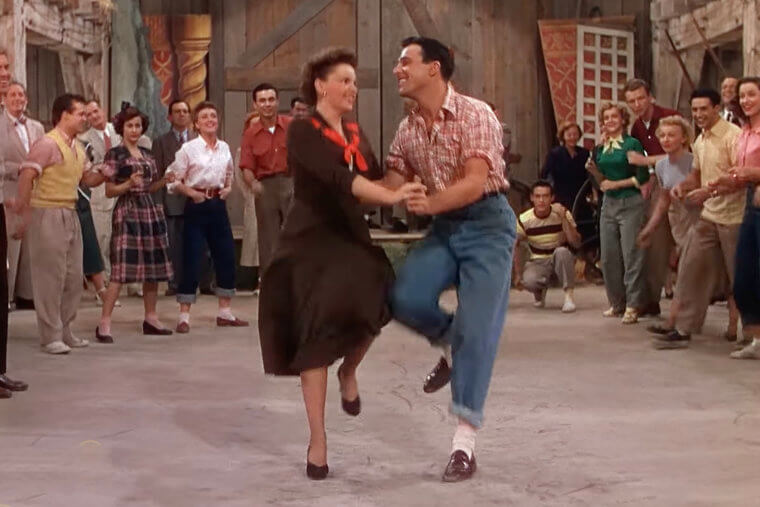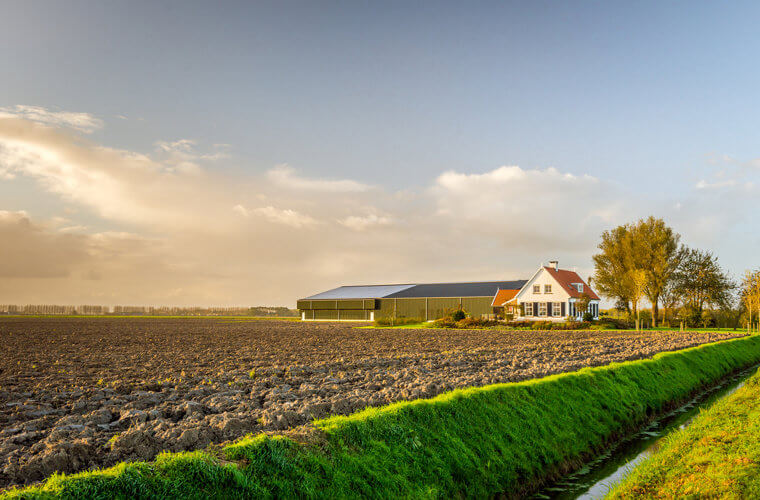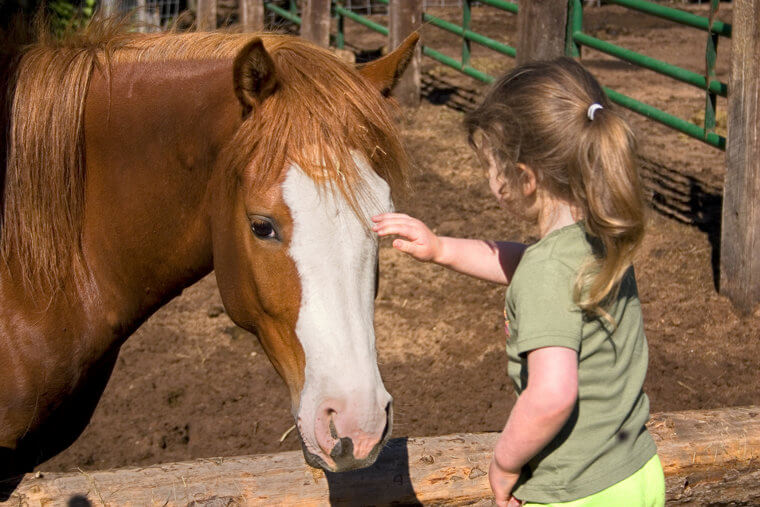Sticking Out Like a Sore Thumb
Anyone who has ever been to Manhattan before will know just how easy it is to get lost. As high-rises surround you, you can feel as though you're trapped by glass. But if you ever find yourself in the Inwood area on Broadway and 204th Street, there is an identifiable building that will help you find your way back home. However, you might want to check it out a bit before going home.
Sticking out like a sore thumb amidst the big buildings and the bustling streets is an old farmhouse, with its rotten white cladding, beautiful balconies, and - a rarity for Manhattan - its own front and backyards.
Frozen in Time
Anyone looking at this farmhouse will quickly see that it's not your normal modern Manhattan building. It looks as though it's been frozen in time, and that's because it has been! According to historians, it was constructed back in 1784 when New York City was very different to the New York City that we know and love today. And while many of the people who call Manhattan their home love to walk past this stunning piece of architecture, there's no doubt that they have questions.
In a city where every available inch of space has been used to build even more skyscrapers and high-rise buildings, how has this farmhouse managed to stay standing all of these years?
The Family Behind It
Of course, to understand a little more about this intriguing farmhouse and the secrets within it, we need to learn a little more about the family who built it in the first place. Well, the history books confirm that the Dyckman family built this home in the 17th century. Like many others during this time, the Dyckman family had moved from the Netherlands to the United States of America to start a new chapter of their lives.
However, the Dyckman Farmhouse wasn't built as soon as the family set foot on American soil. In fact, they lived in the U.S. for almost a decade before building it. So, what was so special about this particular plot?
When Tragedy Struck
Well, it wasn't the plot that inspired the Dyckman family to build their farmhouse. Before building the home synonymous with Manhattan history, the family had lived in a different part of New York City and were extremely happy with their setup. They loved their home and would have stayed there for the rest of their lives if they had the chance, but unfortunately, the world had other plans for them and their legacy.
When tragedy struck, they had no choice but to find somewhere else to live. And it just so happened that the land the Dyckman house now stands on was within their budget.
Turned Into a Museum
In 2018, Meredith Horsford spoke to the Mail Online about the Dyckman family and the Dyckman farmhouse. But you might be wondering what Meredith has to do with the Dyckmans. Is she related to them? Is she the current owner of the house? Well, not quite. Today, the Dyckman Farmhouse is a museum, and Meredith serves as the museum's executive director. This means that she knows everything there is to know about the Dyckmans.
Meredith is clued up on everything to do with the farmhouse, from the Dyckman family tree to their movements throughout the 18th and 19th centuries. And she's the perfect person to share what happened to the family before they moved to the farmhouse.
Running Away From War
Speaking about the Dyckman family, Horsford said, "The Dyckman family came to America from the Netherlands in the 1600s. They were in what’s now called Harlem but then built their first home just northeast of where the current farmhouse is located." But what caused them to move? Well, the family felt the full effects of the Revolutionary War, and so they decided to flee their home in what they hoped would be a temporary move.
When the family felt comfortable returning to their home in Harlem, they had hoped that they would be able to get their lives back on track. But they had never expected what happened next.
Deciding to Rebuild
When the Dyckmans returned to their home, they quickly realized that their home no longer existed. The whole building had been destroyed, and their land and orchards had been left in ruins. The family were devastated and just didn't know what to do. Was it even worth rebuilding on the same plot of land? In the end, they decided to start afresh - which is when they found a plot for sale on Broadway.
The family rebuilt their home from scratch, resulting in the farmhouse that modern-day Manhattan dwellers and visitors can still see today. But their life at the farmhouse was far from easy.
A Family Bereavement
The Dyckman farmhouse had been built by William Dyckman. As a third-generation Dutch-American, he had grown up learning all about his grandfather, who had moved the Dyckman clan over from the Netherlands to the U.S. He wanted to make the whole family proud and respect the legacy his grandfather had built by building the farmhouse, but tragedy struck once again when William passed away just three years after the completion of the farmhouse.
When William passed away in 1787, almost everyone in the Dyckman family agreed to sell the farmhouse and move elsewhere. But there was one particular Dyckman who put a spanner in the works.
Standing in the Way
Standing in the way of the family's plans to make money from the Dyckman Farmhouse was none other than William's son, Jacobus Dyckman. He couldn't bear the thought of the farmhouse falling into the hands of another family, and while he knew that tending to the land and growing the crops would be hard work, he was willing to put in that hard work if it meant keeping the house in the family.
So, he officially took over ownership of the farmhouse in 1793. As well as owning the house, he also owned 250 acres of farmland and a few other buildings to boot.
A Busy Estate
In fact, the Dyckman estate was a busy estate chock-full of people, buildings, and crops. It was down to Jacobus to tend to all of these things, including the corn cribs, cider mill, bar, and stable. And while he was proud to continue the family legacy and keep the farmhouse associated with the Dyckman name, there's no doubt about the fact that he struggled with the workload. It was a lot for him to deal with.
Thankfully, he didn't have to tend to the crops, feed the animals, or look after the buildings all by himself. There were also a few other people by his side, too.
Jacobus and His Family
According to Meredith Horsford and historical records, Jacobus shared the Dyckman Farmhouse with nine others in 1820. These ten people all lived in the main house, and not just because there was enough space to go around. They all shared the main house because they were all a tight-knit family. After all, Jacobus lived there with his wife, his three children, and his niece and grandson. Not only that, but they also had many grown-up children who visited the house often.
Overall, Jacobus had 11 children, which meant the pressure for the farm to succeed was immense. That's why Jacobus also rented out the other buildings on his plot to locals.
A Struggling Community
All in all, there were 20 other locals who called the Dyckman Estate their home. It's believed that together, they made somewhat of a community, all patching together to tend to the crops, feed the animals, and maintain the integrity of the land and the legacy of the plot. However, like many other farms during this time, maintaining a farm wasn't easy, and Jacobus felt weighed down by the hard work and pressure.
To make matters even worse, Jacobus also struggled immensely in his person life during this time. He suffered tragedy after tragedy, and he just didn't know how he would go on.
Dwindling Numbers
As Jacobus was the oldest of those who lived in the Dyckman Farmhouse, he hadn't expected to be surrounded by so much death - especially in regard to his children. He had always hoped that they would outlive him and his wife, but that didn't happen. Between 1809 and 1822, Jacobus not only lost five of his children but also lost his wife and one of their grandchildren. It was too much for him to bear.
After losing seven people over the course of 13 years, many expected Jacobus to crumble. But no matter how sad he felt on the inside, he knew that he had to continue working.
Keeping Things Running Smoothly
Despite everything going on in his life, Jacobus wanted to keep things running as smoothly as possible. After all, Dyckman Farmhouse wasn't just their home - it was also their livelihood. So, with the help of his farmhands, he was able to keep the crops growing and make the most of the land that they were provided with. It wasn't easy, but it was enough to keep them going for a while.
In fact, their farm was able to thrive while others around them struggled to stay afloat. And before too long Jacobus was able to expand their home and their business into something truly special.
Expanding Their Empire
As Jacobus and his team managed to grow and sell some of the best fruits and vegetables in Manhattan, Jacobus made the decision to expand his empire. By the time the late 1860s came around, the Dyckmans owned over 300 acres of land around the borough. Today that would be worth billions of dollars in real estate. To him, though, it was just his home, his business, and his legacy.
And while he was pleased with the progress that was being made, he was also very conscious of the fact that he was getting older and wouldn't be able to continue for much longer. That's when everything changed.
Taking Over the Farm
Sadly, Jacobus Dyckman passed away in 1832, leaving a heartbroken family behind him. As his closest relatives tried to make sense of the estate that he'd left behind, it was decided that his two sons, Michael and Isaac, would move into the Dyckman Farmhouse and preserve its legacy. Amazingly, that's exactly what they did for two whole decades, before they decided that they no longer wanted to live there anymore.
They didn't move far, though, as they simply moved to different properties on the estate. But this still left a big question on everyone's minds... who was going to look after the Dyckman Farmhouse now?
Taking on the Family Legacy
As you may remember, there was a time when Jacobus lived in the Dyckman Farmhouse with one of his grandsons. He was called James Frederick Smith, and he had always had dreams of one day owning the farmhouse he had once called home. That opportunity presented itself when Isaac passed away in 1868, and he made the move to become the rightful owner of the Dyckman Farmhouse. But there was a catch.
Although Isaac had made it clear in his will that he was happy for James to take over the farmhouse, there was something he needed to do before the deeds could be transferred. And it wasn't a small task, either.
What's in a Name?
Isaac had strong terms when it came to the transference of the Dyckman Farmhouse - as well as the whole estate. In fact, he made it very clear that he wanted around 340 acres of the estate to be sold and the money divided between the rest of the family members. Included in the sale would also be the farmhouse. But he did want some of the estate to stay within the family, under one condition.
If James wanted to own the small section of the estate, he would need to change his name to Isaac Michael Dyckman legally. So, James had a big decision to make.
Close to the Family
After much deliberation, James decided to agree to the terms. When he became the owner of some of the Dyckman estates, he also became Isaac Michael Dyckman in the process. But he didn't just lose his birth name. As a result of the first Isaac's wishes, a huge section of his family's estate had been bought by strangers who wanted their own slice of the agricultural pie. This meant he also had to say goodbye to the farmhouse.
At the time, it seemed as though the Dyckman family had cut all ties with the Dyckman Farmhouse. But nobody could have expected what happened over the next few years.
Drawn to the Farmhouse
Over the course of his life, Isaac Michael Dyckman had two children of his own, daughters Fannie and Mary. They grew up on their small section of the Dyckman estate, and they loved where they lived. They loved how much open space they had, they loved the buildings, and they loved the fact that their family had once owned the whole estate. In fact, they kept being drawn back to the farmhouse.
The older they got, the more they realized that the farmhouse wasn't being looked after in the way that it was supposed to be. So, in 1915, they decided to buy the farmhouse back to stop it from being torn down.
Restoring Its Former Glory
What's so amazing about Fannie and Mary is the fact that they didn't buy the Dyckman Farmhouse to live in it. They knew how much the farmhouse meant to their family and how it had impacted their legacy, so they wanted to honor that in a way that would do it justice. So, they focused on doing it up and restoring it to its former glory. Then, they handed the keys over.
No, they didn't sell it. But in 1916, they decided to hand the keys over to officials in New York who would control and run the farmhouse as a museum.
Much Time Has Passed
At the time, Fannie and Mary assumed that the museum would continue to survive for as long as people were interested - or until New York officials were greeted with a development proposal that would line their pockets with extra cash. But, surprisingly, the farmhouse still stands tall today, nestled amongst skyscrapers and high-rise buildings that are synonymous with Manhattan. Not much has changed inside or outside of the farmhouse, either.
In an effort to preserve as much of the Dyckman Farmhouse as possible, museum officials have done very little to the house in terms of maintenance or decoration. And you won't believe what it looks like inside.
Rising Even Higher
Before we get to see what's inside the Dyckman Farmhouse, we have to talk about the outside. After all, so much has changed in terms of the exterior - but also, nothing has changed at all! That's because there was once a time when the farmhouse was equal level to the sidewalk next to it. But as time has passed and the New York sidewalks have been lowered 15 feet, the farmhouse has been raised up even higher.
The buildings around the farmhouse have also changed over the years. There was a time when the farmhouse was surrounded by its own land. Today, it's surrounded by imposing buildings.
A Hidden Garden
Even though a huge portion of the former Dyckman estate was sold after Isaac's death, the farmhouse was sold with its own front and backyard - and this still remains in place today. That's one of the reasons why people stop and stare when they walk past the Dyckman Farmhouse. Sure, the house is a rose amongst the thorns of the Manhattan skyline, but the green gardens are also a welcome sight.
From the beautiful flowers to the lush green grass and even the small canon that sits on the lawn, everything about this farmhouse oozes charm that you don't often get in the big city. But is the inside just as charming?
Honoring the Legacy
As we mentioned, the Dyckman sisters and the museum officials wanted to do everything they could to preserve the history of the Dyckman family. Because of this, the inside of the farmhouse doesn't look like the other houses on the street. In order to honor the legacy of this family, very few changes have been made over the years. Of course, maintenance has been undertaken when needed, but that's about it.
In terms of how the Dyckmans used the home originally and how the rooms were all used, they're all the same as they once were. And there's no doubts that it's a time capsule to the past.
The Living Room
As you walk through the beautiful eggshell-blue front door, you're initially faced with a doorway to the left. But what is this room? As you can see, it features a big open fireplace, soft furnishings, and a large grandfather clock sitting in the corner. When the Dyckmans lived there, they used that room as their living room. Of course, they didn't have television back then, so they had to entertain themselves in other ways.
The guidebook for the farmhouse explains, "They would use this room for spending time together, reading, writing, and even telling stories." So, we have no doubts that this was the main heart of the home.
Keeping Things in Order
Although the living room in the Dyckman Farmhouse was primarily used for unwinding and socialising after a day on the farm, it was also a place to get things in order after a day on the farm. Situated on the opposite side of the grandfather clock is a beautiful wooden writing desk that would have been used by the man of the house back in the day - whether that was William, Isaac, Jacobus, James, or another patriarch of the Dyckman family.
This would have been a place to read letters, take notes, settle accounts, and even store the deeds to the farm and the plot as a whole. So, it was a much-used area of the living room.
The Relic Room
Only a few changes have been made to the Dyckman Farmhouse over the years, but the officials in charge of keeping the museum in check wanted to give visitors a chance to really understand the people who have lived there over the years. That's why they turned one of the spare rooms into a 'Relic Room.' This room is full to the brim with the Dyckmans' possessions that have been found over the years.
From farm tools to letters and cooking utensils, this room is made up of cabinets of curiosities that allow us to understand even more about their day-to-day lives. But what about the upstairs of the house?
Heading Upstairs
While the Relic Room is full of treasures of the past, those who visit the Dyckman Farmhouse also get treated to a slice of history when they head upstairs. Today, those who climb the stairs will be greeted with four doors leading off from the landing. However, it wasn't always like that. According to the history books, the whole upstairs would have been one single room when some of the Dyckmans lived there.
In fact, the museum knows that major construction work was done to the farmhouse before they took over ownership. This building work can actually be traced back to the early 1800s.
Separating the Bedrooms
Sharing a room with your whole family sounds like a nightmare for most modern families, but that was all part and parcel of life back in the day. However, even those who lived hundreds of years ago knew the importance of having their own space, and it's believed that Jacobus decided to separate the space into smaller bedrooms during the 1820s. The museum thinks he did this when his children and grandson got older.
Even though the space was split into smaller rooms, the adults and the children still had fairly large rooms to call their own. And this particular room is now filled with a beautiful green couch.
The Master Bedroom
As you make your way to the master bedroom, it's clear to see that, naturally, the adults gave themselves the bigger room. This master bedroom is what many cottagecore dreams are made of, with the open fireplace, the dark wooden dresser, the reading chair, and even the canopy over the bed. This set-up is exactly how the Dyckman family would have had it when they lived in the house, and it's amazing to see it this way.
The whole space looks cozy and calming, which was probably perfect for them after a long day of working on the farm. But now we've seen the upstairs, it's time to head downstairs again - but further this time.
A Kitchen in the Basement
Most modern houses have their kitchens on the ground floor, as this is often the safest place to have it. However, this hasn't always been the case. Over the course of history, many old houses have been built with basement kitchens - and the Dyckman Farmhouse is no different. What you are looking at here is where the Dyckmans would have cooked up a storm every single day until the house was sold.
But this wasn't just a strange decision choice. The kitchen was built in the basement for a very important reason, and it's one that makes total sense when you think about it.
Serving a Second Purpose
In fact, Meredith Horsford has explained the location of this kitchen perfectly. She said, "The farmhouse was built on original Manhattan bedrock. You can see that the inside their winter kitchen, which is located in what we call the basement today." Yes, what we see before us is just the kitchen they would use in the winter, and that's all thanks to the giant fireplace that you can see in the middle of the room.
As well as being used to cook the Dyckmans' dinner, the fireplace would also be used as a tool to heat the whole house during the colder winter months. And that's pretty smart!
Taking Things Outside
But what about the Dyckman Farmhouse's summer kitchen? As you can imagine, cooking food on a giant fire in the middle of summer would have been a nightmare for the family, which is why households during this time opted to have a summer kitchen instead. However, this isn't as fancy or as complicated as you'd think. That's because these summer kitchens were rarely put in a designated room in the house.
In fact, it's believed that the Dyckmans put their summer kitchen outside of the house, with historians agreeing that they would have used a small shack in the yard to cook their meals. Today, it's a little different, though.
A Cozy Little Home
Although historians know that the outside shack was once used as the Dyckmans' summer kitchen, they didn't think that visitors would want to see the room as it was fairly basic on the inside. So, they decided to turn it into something else instead. To be more specific, they turned it into a cozy little home for the warden of the museum, who still lives there at the time of writing.
Although not much is known about the inside of this shack, there's no doubt that the wooden cladding and the eggshell blue shutters make it an adorable addition to the landscape. But can you see it in real life?
Opening up Its Doors
Well, the answer is yes! As the Dyckman Farmhouse was saved and turned into a museum, you'll be happy to know that it opens up its doors twice a week for curious visitors to check out what's inside. And while it might be a little different to the Empire State Building, the Statue of Liberty, Times Square, and the bright lights of Broadway, this farmhouse has become somewhat of a tourist attraction over the years.
Not only that, but the farmhouse is also open to the community several times a year. The staff put together summer camps for kids, historical lectures, and even bilingual read-alouds.
What Life Would Be Like
More than anything, Meredith wants to use the farmhouse as a way to show the youth of New York City what it's like to live on a farm and outside of the metropolitan norm. She said, "It's a great opportunity to teach kids where their food comes from. We work with local artists and display their art inside the house." All of these things give youngsters the chance to experience something new, just a short walk away from their city homes.
In fact, the Dyckman Farmhouse is often booked up months in advance for these events and workshops. This gives people the chance to enjoy it, and the museum officials to keep the place running.
A Little Addition
One of the things we love so much about the Dyckman Farmhouse is the fact that it's so much more than a farmhouse. Today, the former estate has been chopped down and replaced with high-rise buildings, but there was once a time when the estate was a whole community made up of a farmhouse, fields, and several outbuildings. This included a barn that looked almost identical to the one below.
However, there was one big difference between this barn and the one that was used on the Dyckman estate. After all, you have to think about the family's heritage and where they came from.
A Dutch Barn
Although the Dyckmans moved to the United States to build a new life for themselves, that didn't stop them from embracing their Dutch heritage. And like many other farmers during their lifetimes, they embraced the bright color and the quaint shape of the Dutch barn. But what was the use of such a bar? It's assumed that the Dyckmans would have used the barn to store their machinery and farming equipment.
However, there's no doubt about the fact that this extra storage space would have come in very handy for other uses around the farm. And as the Dyckmans had a lot of land to tend to, they probably used it a lot.
The Perfect Storage Space
Back in the day, the Dyckmans could have used this barn to store so many of their farmyard essentials. From animal feed to the animals themselves, they could have even used the space as a dry place to milk their cows. Not only that, but they could have stored their crops there after they had been picked. Of course, this is a huge difference to how some barns are used today.
In today's day and age, most farmers use these barns to store their tractors and other big machinery, but the Dyckmans wouldn't have had such things back then. They would have done everything by hand or horse.
Milking It
If the Dyckmans did use this barn as a space to milk their animals, there's a high chance that the inside would have looked a little different to how you'd think. You may assume that the barn was one big space from top to bottom, but farmers who used the space for milking would actually split this space into two so that they didn't lose any of the storage space they so desperately needed.
The lower level would have been used as the main epicenter for milking, but then a top mezzanine level would be used to store hay that would eventually feed the animals.
The Importance of the Barn
With such important uses, barns were a huge part of a farmer's inventory back in the day. The Dyckmans would have relied on this space for so much, and it's believed that these barns play a huge part in their Dutch heritage. In fact, some have even said that Dutch and German farmers during this time would build a barn before anything else on their property. Yes, even their house!
The barn was so integral to their work that they wanted to make sure that the barn was perfect before they had a place to unwind at the end of the day, and that actually makes a lot of sense.
Time for Work and Play
Barns weren't just used for practical purposes, though. Although the Dyckmans would have primarily used this space to store their tools and animals, they may have also used their barn as a way to socialise with other farmers nearby. Yes, these spaces doubled up as social spaces, with people coming together to catch up, sing, dance, and take a break from the hard labor that awaited them in the fields.
Carla Due told Nebraska’s Wessels Living History Farm, "If they had a real nice barn, they would have a barn dance up in the haymow before they started putting up hay."
Not the Only One
Of course, historians believe that the Dyckmans didn't just have the one barn to their name. So, if they decided to have a barn dance in one of their Dutch barns, they didn't have to worry about taking over their only usable storage space. Back in the day, it was believed that the family had a whole host of buildings on their giant estate. Because of this, it was assumed that they had many barns.
These barns would have all had their own purposes, and they may have even been associated with specific animals or crops. For example, one barn could have been solely dedicated to the chickens.
A Lasting Legacy
Although you can no longer see any of the Dyckman barns when you visit the Dyckman Farmhouse, it's important to realize that this was once so much more than just a house. Before the skyscrapers and the high-rise apartment blocks was a wide open space filled with fields, animals, crops, and countless barns that all served a purpose. The Dyckmans were part of the New York City before it became the New York City we know today.
That's why the farmhouse's place in the city is such a big deal. Let's just hope that it will continue to honor the Dyckman's legacy for many more years to come.
Through: Scribol

